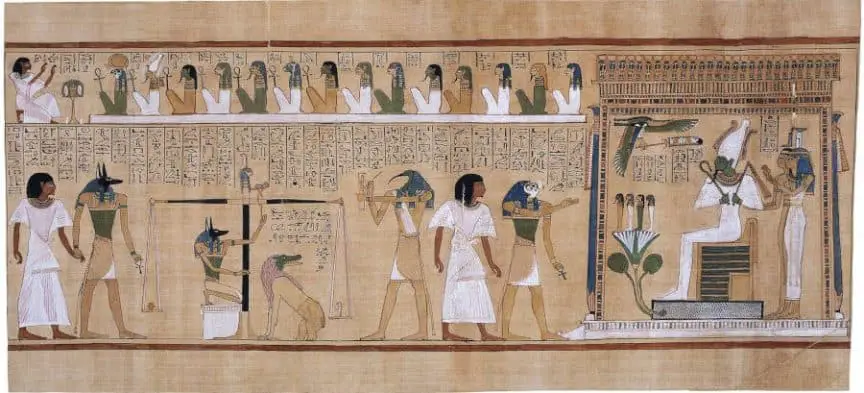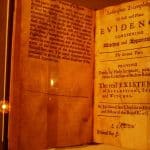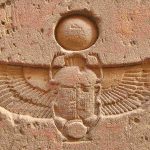The 42 Negative Confessions of Maat or 42 Declaration of Innocence are part of the Egyptian Book of the Dead. According to Egyptian funerary beliefs, judgment after death was a process the deceased had to undergo in order to become “justified” and thus qualify for entrance into the hereafter. From this point of view, judgment can be considered to be an initiation ritual.
The Ani’s papyrus is the best preserved Book of the Dead. it is a funerary text providing instruction to the soul in the afterlife and at the time it was written, it would have been considered necessary in order for one to pass through judgment before Osiris and the divine court of justice.
It contains many chapters and a large number of drawings that explain step-by-step what happens to the soul when it leaves the body. It is a very large papyrus. Unrolled, it measures more than 26 meters!
We do not know much about its owner, Ani. In the introduction of the book, we can read that Ani was a Scribe, Governor, and Administrator. He was married to a Priestess. Surely, he had to be a person of high rank to be able to afford a Book of the Dead so complete and so beautiful.
The most famous spell of the Book of the Dead is 125. It explains how the deceased has to declare his innocence before the court of the gods and how, afterward, the gods will weigh his heart.
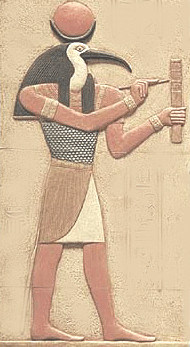
The heart was taken as the symbol of all the emotions, desires, and passions, both good and evil, and out of it proceeded the issues of life. This is why, while all other organs were removed from the body of the dead, the hearts remained in the mummies. The heart was considered to be the base of one’s personality and character and should be delivered to the gods in the afterlife for judgment.
According to the Book of the Dead, the petitioner led by Anubis into duat, ( the place for judgment), the hearts of the dead were said to be weighed against her single “Feather of Maat”, the white feather of truth, symbolically representing the concept of Maat, in the Hall of Two Truths.
If the heart was found to be lighter or equal in weight to the feather of Maat, the deceased had a virtuous and ethical life and would go on to Arus (the Field of Reeds).
If the heart was found to be heavier in weight to the feather of Maat, then the deceased was condemned to remain in the Duat, the place of non-existence, and his heart was consumed by the monster Amut, the ferocious ‘devourer’, the strange beast shown here which is part-crocodile, part-lion, and part-hippopotamus. For this judgment, Osiris, Thoth, and Anubis would confer with the 42 Judges.
Before the commencement of the Confession, the soul would greet Osiris, claim to know the names of the 42 Judges and declare his innocence of wrong-doing, concluding with the statement “I have not learnt that which is not”. This means that the deceased never lost his faith or gave attention to a belief contrary to Maat’s truth and the will of Egyptian gods.
Ancient Egyptian Shamanism Diploma Course
- Certified Course
- Accredited Course
Course Information
- 10 Modules
- Lifetime Access
- Study Group Access
Use “LIGHTWARRIORSLEGION466 ” code for 70% off.
In this scenery, the deceased standing before his own heart/soul (ka) on the scale of Maat. On the other side of the scale is the “feather of truth” (Shu) of Goddess Maat, and at the top of the scale of justice is portrayed her head. Osiris is seen seated at one end of the Hall of Maat accompanied by the two goddesses of Law and Truth (his sisters Isis and Nephthys), and the Forty-Two gods who are there to assist him.
Thoth stands, holding a tablet and a writing tool to record the results from the scale. Each of the Forty-Two gods represents one of the nomes of Egypt and has a symbolic name, and are called “the hidden Maati gods, who feed upon Maat during the years of their lives”.
When the deceased had repeated the magical names of the doors of the Hall, he entered it and saw these gods arranged in two rows, twenty-one on each side of the Hall. At the end, near Osiris, were the Great Scale, under the charge of Anpu (Anubis), and the monster Amut, the Eater of the Dead.
The deceased follows the set formula of Negative Confessions (deny of having committed a specific sin), he addresses each god directly and mentions the nome of which the god is a protector, in order to emphasize the unity of the nomes of Egypt.
The following translation of the 42 negative confessions is by E. A. Wallis Budge, from his original work “Egyptian Book of the Dead: The Papyrus of Ani”. Each invocation consists of three elements: the name of a male divinity, his place of origin, and the negative action over which he presides and what the deceased affirms to have never committed.
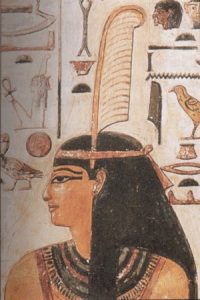
- “Hail, Usekh-nemmt, who comest forth from Anu. I have not done iniquity.”
- “Hail, Hept-khet, who comest forth from Kher-aha. I have not robbed with violence.”
- “Hail, Fenti, who comest forth from Khemenu. I have not stolen.”
- “Hail, Am-khaibit, who comest forth from Qernet. I have done no murder; I have done no harm.”
- “Hail, Neha-her, who comest forth from Rasta. I have not defrauded offerings.”
- “Hail, Ruruti, who comest forth from Heaven. I have not minished oblations.”
- “Hail, Arfi-em-khet, who comest forth from Suat. I have not plundered the god.”
- “Hail, Neba, who comest and goest. I have spoken no lies.”
- “Hail, Set-qesu, who comest forth from Hensu. I have not snatched away food.”
- “Hail, Utu-nesert, who comest forth from Het-ka-Ptah. I have not caused pain.”
- “Hail, Qerer, who comest forth from Amentet. I have not committed fornication.”
- “Hail, Hraf-haf, who comest forth from thy cavern. I have not caused shedding of tears.”
- “Hail, Basti, who comest forth from Bast. I have not dealt deceitfully.”
- “Hail, Ta-retiu, who comest forth from the night. I have not transgressed.”
- “Hail, Unem-snef, who comest forth from the execution chamber. I have not acted guilefully.”
- “Hail, Unem-besek, who comest forth from Mabit. I have not laid waste the ploughed land.”
- “Hail, Neb-Maat, who comest forth from Maati. I have not been an eavesdropper.”
- “Hail, Tenemiu, who comest forth from Bast. I have not set my lips in motion against anyone.”
- “Hail, Sertiu, who comest forth from Anu. I have not been angry and wrathful except for a just cause.”
- “Hail, Tutu, who comest forth from Ati. I have not defiled the wife of any man.”
- “Hail, Uamenti, who comest forth from the Khebt chamber. I have not defiled the wife of any man.”
- “Hail, Maa-antuf, who comest forth from Per-Menu. I have not defiled myself.”
- “Hail, Her-uru, who comest forth from Nehatu. I have not caused terror.”
- “Hail, Khemiu, who comest forth from Kaui. I have not transgressed the law.”
- “Hail, Shet-kheru, who comest forth from Urit. I have not burned with rage.”
- “Hail, Nekhenu, who comest forth from Heqat. I have not stopped my ears against the words of Right and Truth.”
- “Hail, Kenemti, who comest forth from Kenmet. I have not worked grief.”
- “Hail, An-hetep-f, who comest forth from Sau. I have not acted with insolence.”
- “Hail, Sera-kheru, who comest forth from Unaset. I have not stirred up strife.”
- “Hail, Neb-heru, who comest forth from Netchfet. I have not judged hastily.”
- “Hail, Sekhriu, who comest forth from Uten. I have not been an eavesdropper.”
- “Hail, Neb-abui, who comest forth from Sauti. I have not multiplied words exceedingly.”
- “Hail, Nefer-Tem, who comest forth from Het-ka-Ptah. I have done neither harm nor ill.”
- “Hail, Tem-Sepu, who comest forth from Tetu. I have never cursed the king.”
- “Hail, Ari-em-ab-f, who comest forth from Tebu. I have never fouled the water.”
- “Hail, Ahi, who comest forth from Nu. I have not spoken scornfully.”
- “Hail, Uatch-rekhit, who comest forth from Sau. I have never cursed God.”
- “Hail, Neheb-ka, who comest forth from thy cavern. I have not stolen.”
- “Hail, Neheb-nefert, who comest forth from thy cavern. I have not defrauded the offerings of the gods.”
- “Hail, Tcheser-tep, who comest forth from the shrine. I have not plundered the offerings to the blessed dead.”
- “Hail, An-af, who comest forth from Maati. I have not filched the food of the infant, neither have I sinned against the god of my native town.”
- “Hail, Hetch-abhu, who comest forth from Ta-she. I have not slaughtered with evil intent the cattle of the god.”
Related reading: Unlocking the Secrets of the Ankh ☥: How this Ancient Egyptian Symbol Continues to Inspire and Intrigue Today – Opens in new tab
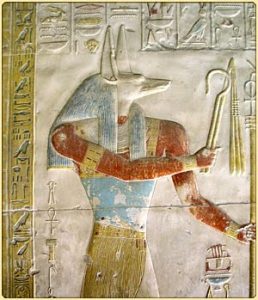
These declarations varied somewhat from tomb to tomb. Scribes would adjust a text to the person and thus, while there was a standard number of 42 confessions, the sins listed vary from text to text, in order to ensure the petitioner ‘s continued existence in the Afterlife.
Therefore, it cannot be considered as the standard definition of Maat’s confessions. Rather, they appear to express each tomb owner’s individual practices in life and wipe particular misdeed, in order to please Maat, and eventually declared as ‘true of voice’ or ‘justified’.
You may be interested in: Delphic Maxims, Pearls of Wisdom from the Seven Sages & 35 selected powerful quotes from Alexander The Great
Stay in Touch
 Join our newsletter by using the forms on this website or click here!
Join our newsletter by using the forms on this website or click here! Follow us on Google News
Follow us on Google News Follow us on Facebook
Follow us on Facebook
Bibliography: “Egyptian Book of the Dead: The Papyrus of Ani” edited by E.A. Wallis Budge. (Aff. Link).
Featured Photo by Wikimedia Commons

